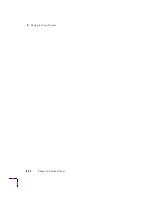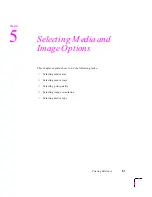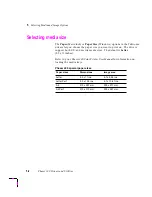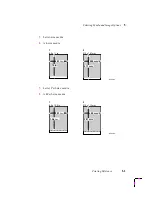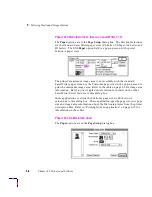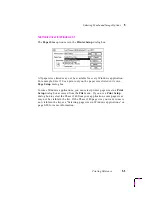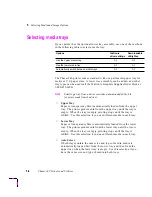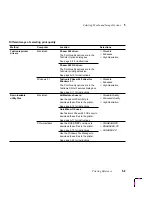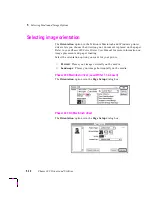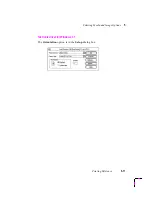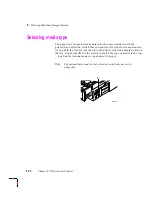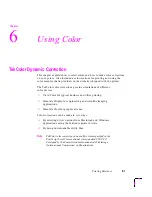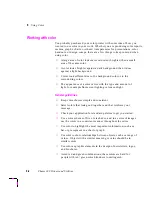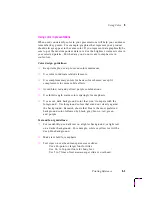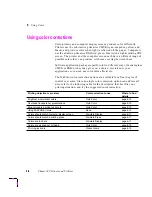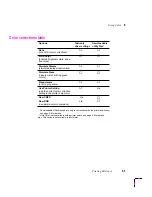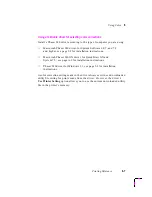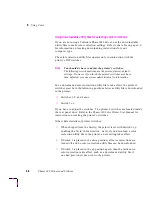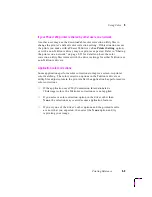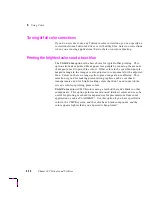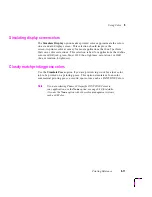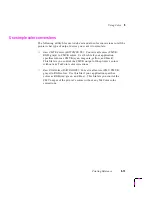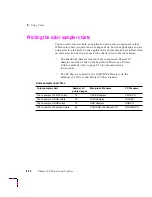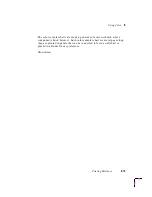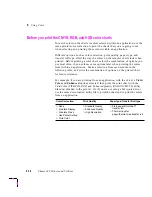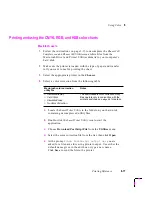
6
Using Color
6-2
Phaser 240 Drivers and Utilities
Working with color
You probably purchased your color printer with some idea of how you
wanted to use color in your work. Whether you are producing color reports,
memos, graphs, charts, overhead transparencies for presentations, color
handouts, or design comps, there are a few things to keep in mind when
using color.
■
A large area of color looks more saturated (brighter) than a small
area of the same color.
■
A color looks brighter against a dark background than it does
against a light background.
■
Colors look different due to the background color or to the
surrounding colors.
■
The appearance of a color varies with the type and amount of
light, for example fluorescent lighting versus sunlight.
General guidelines
■
Keep color choices simple and consistent.
■
Select colors that look good together and that reinforce your
message.
■
Check your application for standard palettes to get you started.
■
Use a color scheme of five or six shades, and in a series of images,
use the colors in a consistent manner throughout the series.
■
Use color to highlight the most important information, such as a
bar or pie segment in a chart or graph.
■
Use color to show relationships between objects, such as a range of
values. Objects with a similar meaning or value should be in
similar colors.
■
Use color as graphic elements in the design of newsletters, logos,
and brochures.
■
Avoid red and green combinations; these colors are hard for
people with red/green color blindness to distinguish.

